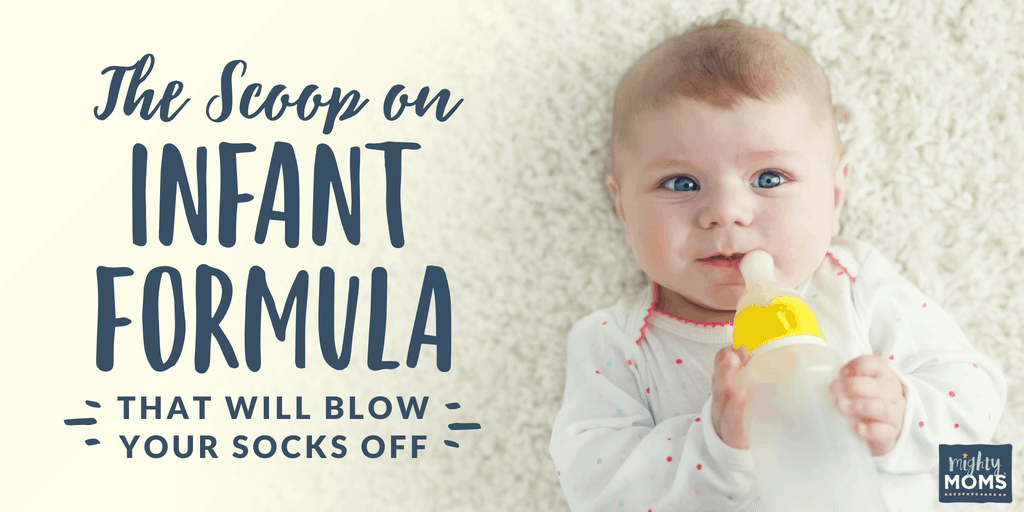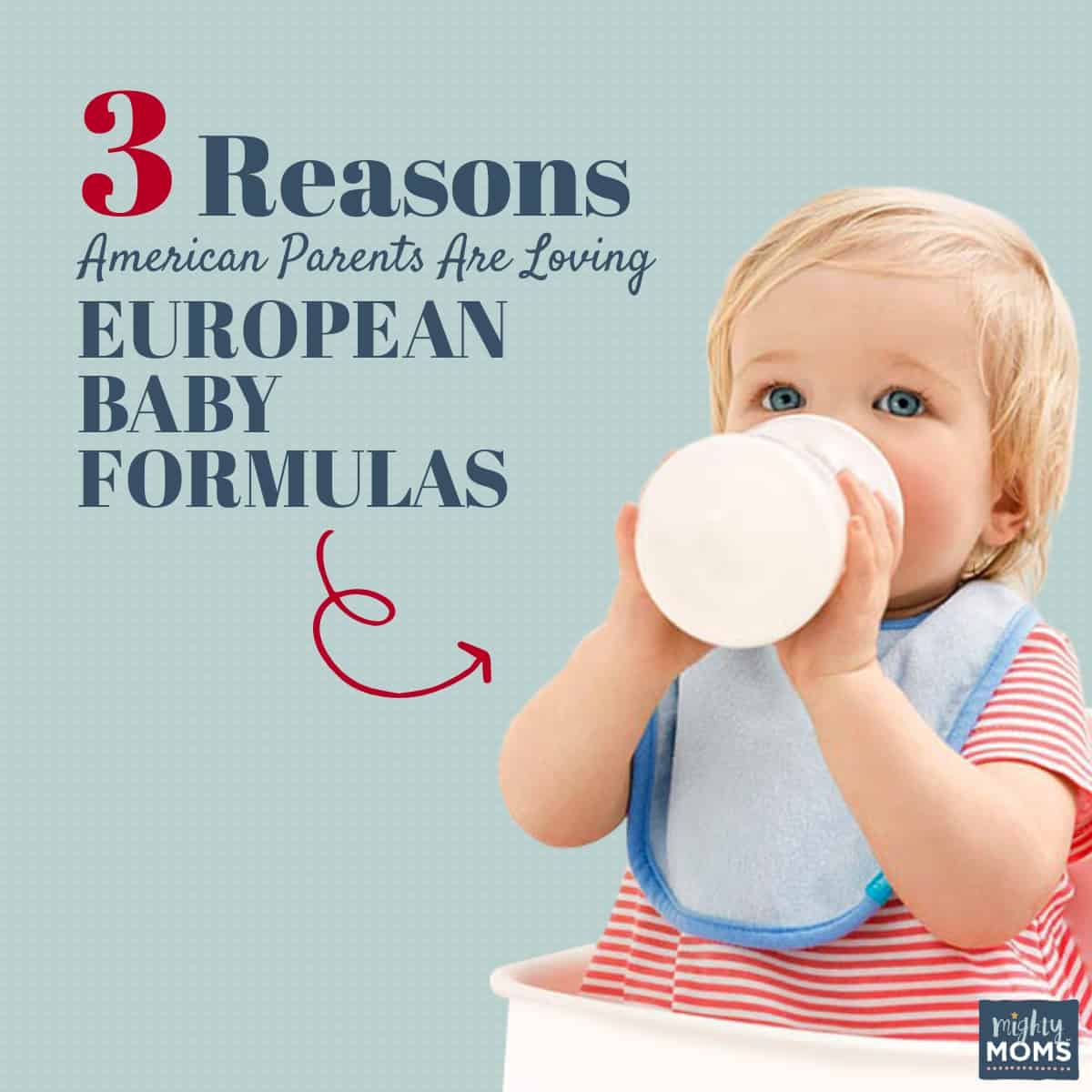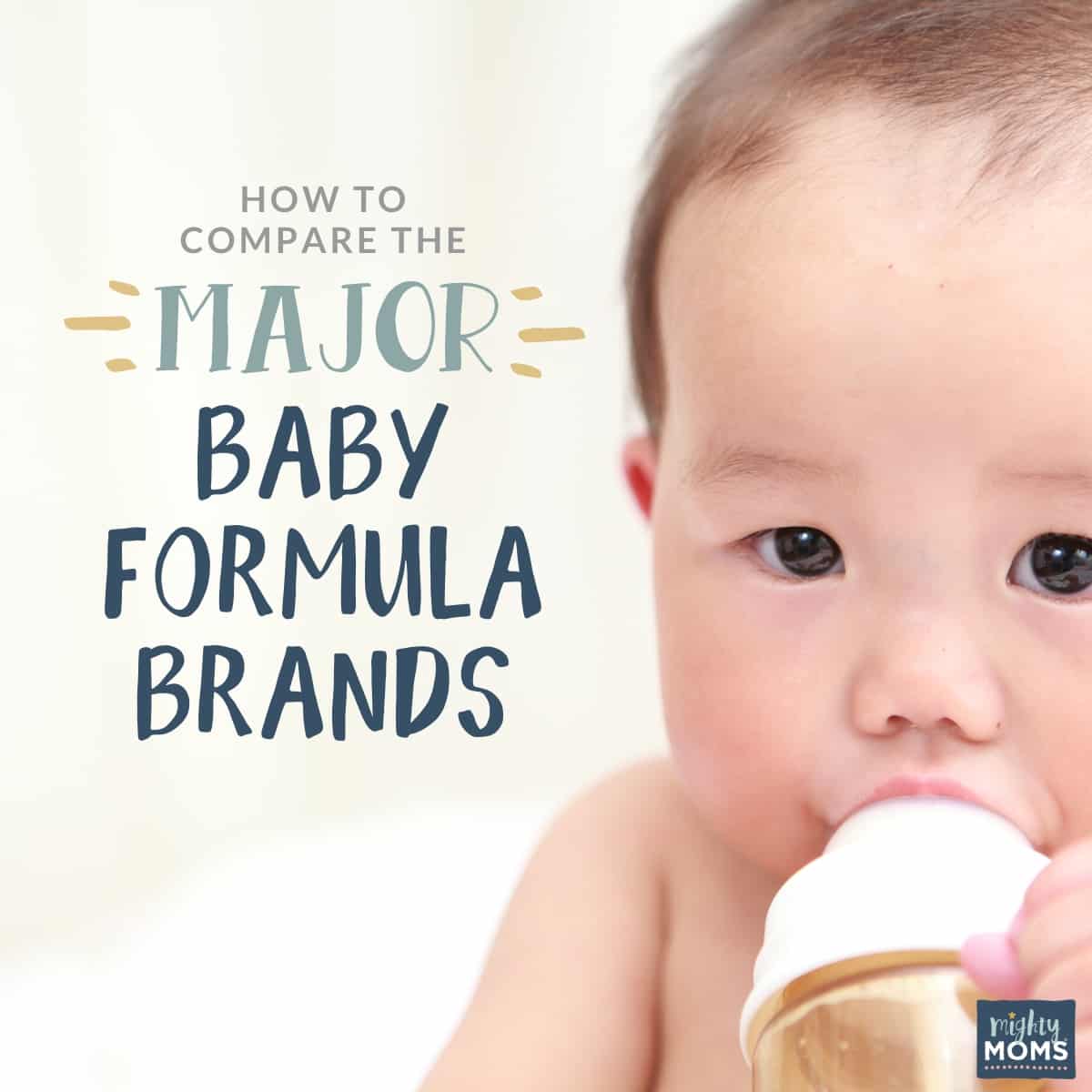In This Article...

Seriously. You should probably put on shoes, because I am dedicated to PACK this article on infant formula with as much helpful information as I could find. After all, it took forever to research this head-spinning helpful article on infant formula.
For. Ever.
Still, it was on my “Before I Die” bucket list, so I can’t complain.
What?! So I’m the Non-Adventurous Type.
Don’t judge me! When you die scaling Mt. Everest at age 85 I’ll still be alive researching the best deal on incontinence products.
SO THERE.
Besides, I’m about to put my research-obsession to work and provide you with a happy place of infant formula know-how.
From understanding the differences between the baby formula brands, to learning how to choose the right one your baby (and wallet) will love, I vow that you will end this article as a Certifiable Formula Expert, and be one step closer to achieving inner peace for your baby’s rumbling tummy.
The Not-So-Secret Formula
for Infant Formula
When you come down to it, the formula for infant formula (see how I did that? *pats on back for cleverness*) isn’t really all that special.
Every infant formula will contain four basic things.
- Carbohydrates
- Proteins
- Fats
- Vitamins & Minerals
Besides these, many brands will throw in extra goodies like nucleotides (like DHA & ARA), prebiotics (for digestion), rice starch (for spitter-uppers), etc.
But those extras are like the bonus free scoop you can weep your way into getting at Baskin Robbins. (Blubbering works every time. *wink*) Those four basics ingredients are what ties every infant formula together.
Obviously, this begs the question: If they all use the same starter blocks, what makes each can unique?
The Quest for the Perfect Protein
The protein source in your baby’s formula is really important. Proteins are often the main culprit behind your baby’s tummy-troubles. Her little digestive system is still developing. This means that some proteins will be harder for her to break down into a form her body can use to grow.
There are four main sources of proteins in infant formula:
- Cow’s milk
- Goat’s milk
- Soy milk
- Amino acids (the teeny tiny particles of a protein)
Infant Formulas Based on Cow’s Milk
Cow’s milk (and goat’s milk, actually) is made up of two main proteins: whey and casein. Breast milk is 60% whey and 40% casein.
The whey protein empties faster from the stomach because it stays in liquid form throughout the digestive process.
The casein protein curdles in the tummy (think a gross cottage cheese). This means it switches to a solid in the stomach. A solid the body has to break down again in order to use.
Practically speaking, understanding this whey-casein thing can be really helpful when choosing a good baby formula.
- Good Start is the only baby formula that is 100% whey. This is why babies requiring a more sensitive formula often do well on Good Start.
- Similac is 80% whey and 20% casein.
- Enfamil is 60% whey 40% casein.
If you’re dedicated to staying with an infant formula based on cow’s milk, switching to a different brand may be really helpful. Just watch for these 7 allergy signs!
Infant Formulas Based on Goat’s Milk
Goat’s milk formula is a sister to cow’s milk, in that they both use lactose as their carbohydrate source. Goat’s milk also uses whey and casein. (Which is why you shouldn’t give you child goat’s milk if he has a milk allergy.)
Naturally, goat’s milk has a ratio of 20% whey, 80% casein, but goat’s milk formula has been adapted to be 50:50. This way it can be consumed safely without hurting your baby’s kidneys. (In other words, never feed young children regular goat’s milk without checking with your doctor first.)
The thing I really like about goat’s milk formula, though, is the way it curds in your child’s stomach. Instead of the dense baseball-sized curd of cow’s milk sitting in the tummy, goat’s milk formula creates a looser curd, like a whiffle ball. This makes it much easier for your child to digest. If your child struggles with constipation, a simple switch to a goat’s milk formula like Kabrita can make a huge difference.
Kabrita goat’s milk formulas have also been linked with healing eczema from the inside out! If you’re child is covered with tiny red dots on the backs of his arms and legs, sign up here to get a free Kabrita sample.
You may notice that the Kabrita cans say “Toddler Formula” on them. This is a labeling issue with the FDA. The formula is recommended for any child over 6 months who has already started eating solids.
Holle Goat Milk Formula is suitable for babies at birth and is a great organic option for parents to try. It is a European baby formula, so you’ll need it to be shipped from a reputable company like Get Leche. (If the German on the box makes you nervous, don’t worry, I’ve got a great translating article here for you!)
Infant Formulas Based on Soybeans
Another alternative to cow and goat’s milk infant formula is soy. No, there’s no farmer sitting on a stool, milking soybean plants. The process is actually pretty complicated.
Here’s when NOT to use soy formula:
- If your baby was born prematurely.
- If your baby has a milk allergy. 10-14% of babies who have a milk allergy will also react to soy, so check with your doctor first.
Using soy formula is not without controversy. In the past, doctors have been concerned that the high number of phytoestrogens in soy formulas may interfere with the immune system, the thyroid, or mess with the reproduction system (especially in boys).
The AAP indicates that nothing is conclusive, but do urge scientists to keep looking into it. If you are interested in soy formulas, read this, and talk with your doctor. He will have the most up-to-date information on this subject!
Infant Formulas Based on Amino-Acids
Hypoallergenic infant formulas use amino-acids as their protein source. Remember 8th Grade Biology? Amino-acids are the building blocks of proteins.
So a hypoallergenic formula is pre-digested, in a way. The protein is broken down so completely that your baby’s picky cell walls don’t even realize they are there. They can walk right into the cell like they own the place!
This means your little gal has less gas, fewer spit-ups, and shorter bouts of screaming.
Amino-acid infant formula is best for babies who have severe protein allergies, acid reflux, or suffer from colic.
Should You Choose an
Organic Infant Formula?
In the United States, there are three levels of “quality control” placed on infant formula.
- First, the FDA has strict requirements they have to follow.
- Secondly, the International Dairy Federation has a list of “Thou Shalt Nots” when it comes to making infant formula.
- Lastly, the different manufacturers themselves have their own internal sets of rules and guidelines they create to try to out-perform their competitors.
When it comes to organic infant formula, we should add a #4 to that list: meeting the USDA’s definition of “organic”. Personally, I get really confused when it comes to all the nuts and bolts of bureaucratic phraseology, so when it comes to organic infant formula, I ditch all that and do something simple: I head to Europe.
The organic farming standards of the EU are much stricter than here in the US. If you are really committed to going organic, read through my article 3 Reasons Why American Parents are Loving European Baby Formulas. You’ll be amazed with what you learn!
Balancing Infant Formula Cost
Yes, infant formula is expensive. (And the more specialized the formula, the more you’ll have to pay.)
Still, there are some tricks to bring the cost down. (Or better yet, get some free samples!)
Despite these cost problems, never try to make infant formula at home. There are too many opportunities for serious oopsies that can leave your child’s life on line. There are reasons the FDA has such strict regulations for formula manufacturers.
If you really don’t think you can afford your baby’s formula, call your local food stamp office for financial assistance or as your pediatrician for free formula samples.
Oh, and if you’re feeling guilty about using formula…you’ve got to read this. Your heart will be massively encouraged!
We ♥ honesty! This post contains affiliate links that provide extra money for our mutual coffee habits addictions. Click here to learn more. As an Amazon Associate I earn from qualifying purchases.


